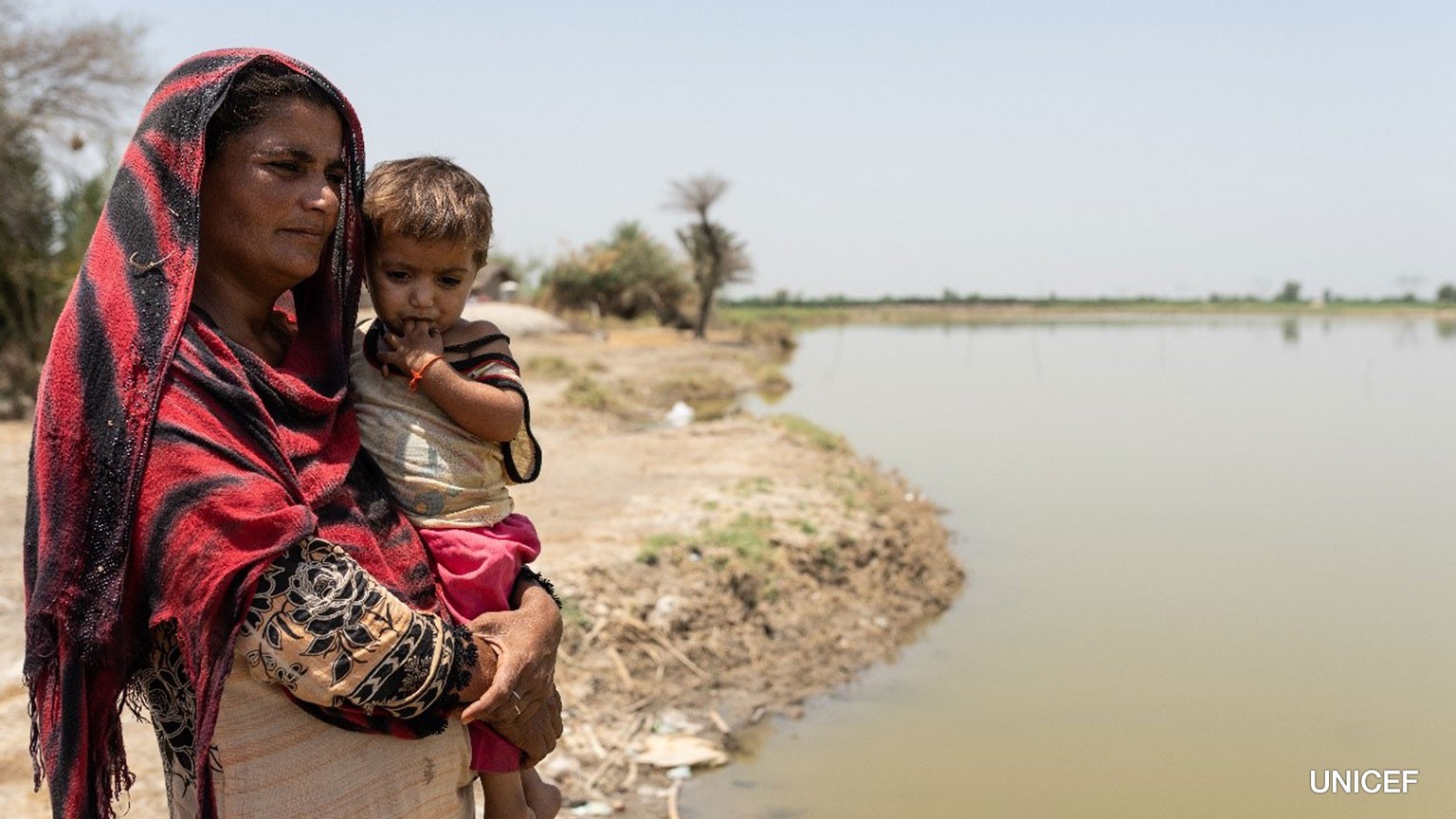"We can't be responding, responding, responding every time," says Okura Yoko, an Islamabad-based Climate Change and Disaster Risk Management Specialist for the World Bank.
A recent visit she made to the disaster-affected areas highlighted the need for investment targeting vulnerable populations, whether in education or infrastructure.
"Disasters and climate change ... don't happen in silos. They happen on top of existing socioeconomic conditions and systems and inequities," Okura explains.
"In areas where I visited, the illiteracy rate ... is much higher for women than men. Most women did not have a mobile phone or a bank account, so when you're thinking about the disaster recovery, I think it's very easy to imagine how vulnerable groups, whether it's women, children or historically marginalized groups, do not have access to this information and services."
Parts of the country remain underwater
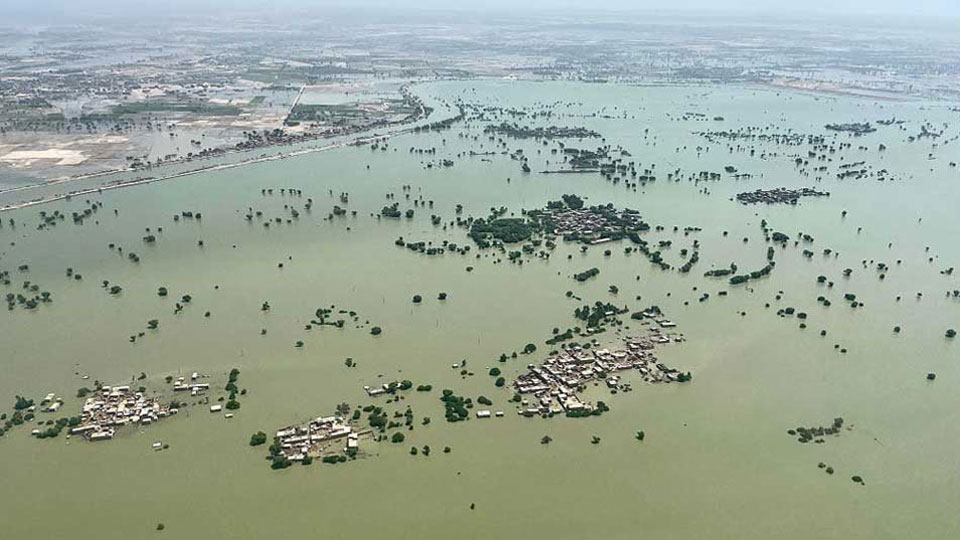
The floods last year affected 33 million people in Pakistan, roughly one in seven of the population. The death toll was 1,739 and more than 2.2 million houses were damaged or destroyed. The United Nations estimates 8 million people were displaced.
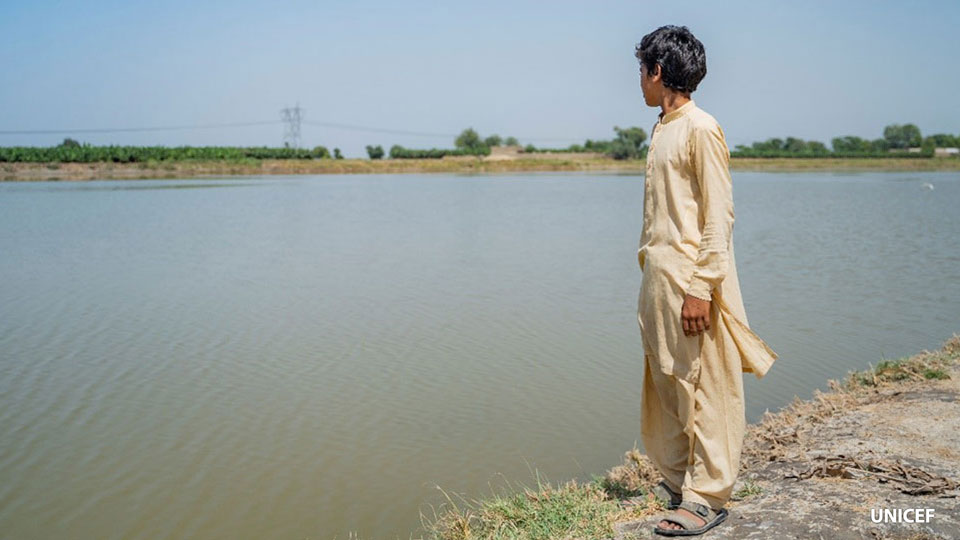
Photos taken in May show parts of the country remain underwater. Children are forced to walk for hours to get clean drinking water. UNICEF is helping 1.3 million people, but many more are waiting for a stable source.
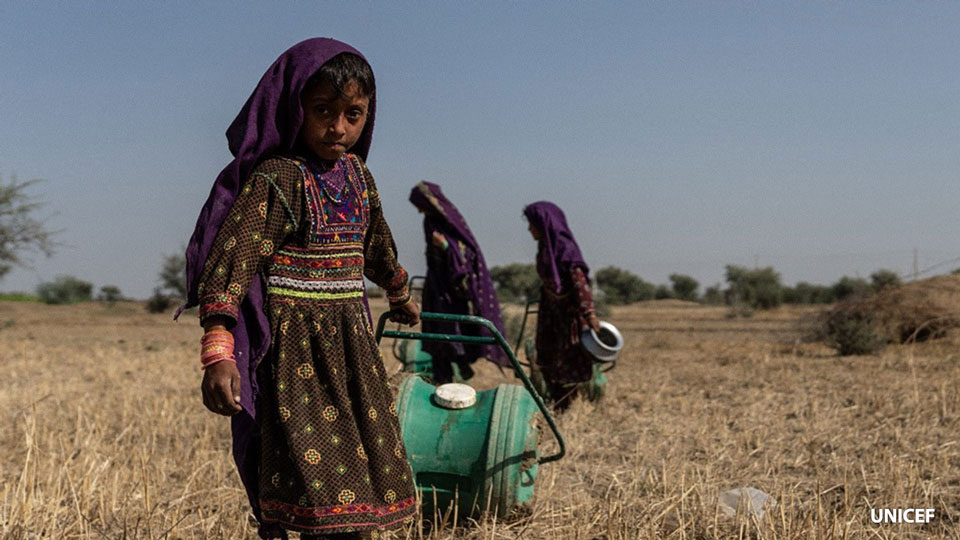
"I went most recently to the affected areas in Sindh province a few weeks ago, and it was very clear that there's numerous challenges," says Okura.
"Many people do not have access to clean and safe drinking water. The reconstruction has started for the houses, but many people still do not have a roof over their heads. And this is in extreme heat of almost 45 degrees.
"So you can imagine what a very, very difficult situation this is. Schools are still damaged. And another important thing is mental health. Psychosocial healthcare is also a really essential need."

Disasters highlight existing socioeconomic problems
Pakistanis are also facing a nutrition crisis. According to the UN, 10.5 million people are affected by acute food insecurity. It's one of several issues, including poverty and a low literacy rate, that date back years.
The poverty rate in parts of Sindh province was more than 50 percent even before the floods. Okura says the poor and most vulnerable are disproportionately impacted.
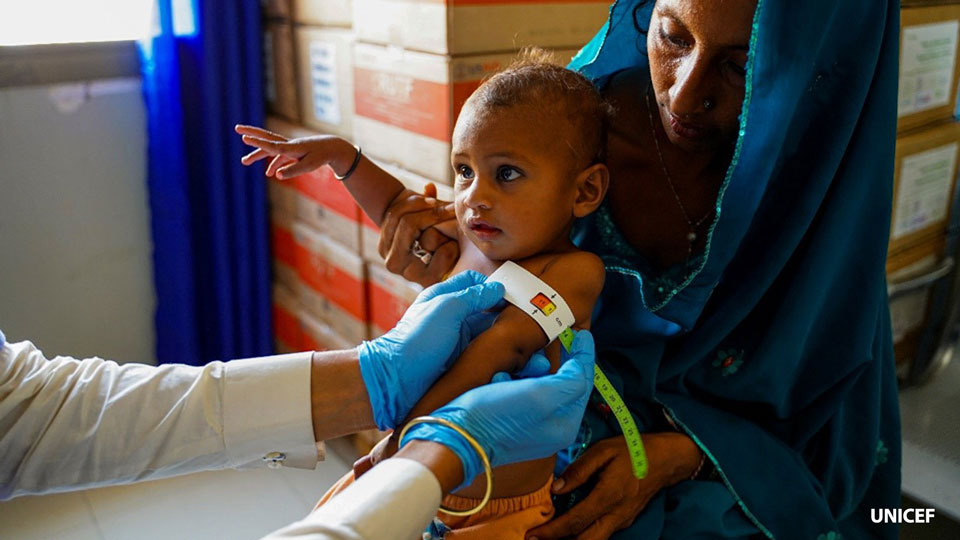
"What's really important is to make sure that disaster recovery is designed and implemented in an inclusive manner," notes Okura.
Monsoon season brings more suffering
With monsoon season underway, the situation is growing more complicated. The UN reports that heavy rainfall and strong winds since May have resulted in 31 deaths, 150 injuries and caused significant damage to properties, crops and livestock.
Investment builds resilience
Okura says multiple studies prove how important it is to build resilience and support communities in their efforts to be better prepared.
"We know that for low- and middle-income countries on average, the net benefit of investing in resilient infrastructure is actually $4 for every dollar invested.
"This isn't only to avoid costly repairs, but to minimize disruptions to power, water, roads, which impact jobs and incomes, and also prevent children from going to school and studying."
She adds that improved infrastructure can also help contain the spread of waterborne diseases like cholera.
